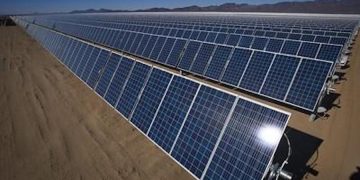Deal activity for digital technologies in energy has grown at 18.8% CAGR since 2008. Most investments are being made at the seed round into Oil and Gas software start-ups. However, activity is growing quickly for renewables and AI/machine learning, respectively.
Introduction
The energy industry is characterized by great instability. Be it the supply/demand imbalance of oil we are seeing today or the ever-changing costs and efficiency levels in renewable energy assets – energy economics are always changing. In an effort to offset some of these instabilities, energy leaders are investing in digital technologies.
Digital technologies are centered on data. Data and data analytics are the modern drivers behind decision making in business. Therefore, energy managers can make more informed decisions by leveraging digital technologies.

Some potential applications of digital technologies include asset operation and maintenance, workplace safety, carbon emission monitoring, geographic and geologic surveying, transportation logistics, and knowledge transfer. Overall, digital technologies have the potential to optimize assets, increase safety, and drive decarbonization. As a result, energy digital technologies have continued to close more fundraising deals over time.
Fundraising activity
Fundraising can refer to grants, capital raises (various stages), mergers and acquisitions (M&A), debt, initial public offerings (IPOs), etc. Most start-ups raise funds via grants or capital raises because they do not have a well-proven model for M&A, the financial strength to take on debt, or a valuation high enough to make an IPO attractive. For the sake of the article, I measure the investment stage instead of the investment type. This allows us to understand at what point these start-ups are raising funds instead of getting lost in the weeds of how they are raising them and on what terms.
Activity by Industry
Following my disclaimer at the bottom, many energy digital technology start-ups may not refer to themselves as operating in ‘oil & gas’ or ‘solar’ industry but rather label themselves as ‘energy’ for the sake of simplicity. All companies without industry specificity are labeled as ‘other’ but are still relevant for this analysis.
Oil and gas
Oil and gas (O&G) digital technology start-ups have championed themselves as the leaders in securing the most funding each year since 2008 (with the exception of 2011). The oil and gas industry has been facing pressure to reduce costs and emissions. It is suspected that as O&G assets continue to age, the public pushes for emission reduction, and digital technologies fall in cost and rise in efficacy, digital technologies will become more attractive to the O&G industry.
Solar
Solar digital technology start-ups trail O&G for annual fundraising deals closed; however, they show more stability in closing more deals over time. Overall, solar assets are generally in less extreme environments and do not require as much capital intensity as O&G, therefore, people can more independently operate and manage these assets. Solar is also not facing the same pressures as O&G. Not surprisingly, the growth rate for this industry’s closed fundraising deals follows the growth of solar capacity. The larger solar capacity of tomorrow, will be supported and managed with digital technologies, as many today already are.
Wind
Wind has had a slow start when it comes to digital technology fundraising deals. We can draw some of the same rationale used for solar assets to conclude why wind isn’t seeing much activity – wind assets are less mature than O&G and more readily accessible to be supported by human touch. Wind technicians can more readily locate non-operational assets relative to other energies. However, technological advances and the strive to optimize wind assets have driven recent fundraising deals in this space.

Activity by segment
Software
For the energy industry, software start-ups have led the pack for total fundraising deals year over year. Software is not only the broadest category but is the most mature and can be less capital intensive. 2019 experienced 47 closed fundraising deals for software companies with application to energy. Since 2008 the software segment for energy has grown at 14.1% CAGR.
Artificial intelligence and machine learning
Artificial intelligence (AI) and machine learning make up the next largest segment of total fundraising deal counts. It makes sense that AI makes up a larger share of total deals because AI is commonly used as an umbrella term with machine learning being one facet of AI. In 2019, AI and machine learning closed 25 and 16 fundraising deals, respectively, for a sum of 41 deals.
Since 2008, AI has grown at 18.3% CAGR, and since 2010 machine learning has grown at 36.1% CAGR – a combined 23.6% CAGR since 2008. Not as impressive as we might think because technological limitations constrained the takeoff of AI and machine learning deals until 2014. However, since 2014, the segments have completed more fundraising at 32.6% CAGR. Over the last 5 years, AI and machine learning haven’t made up the largest segment but have been the fastest-growing segment in terms of the number of deals closed.
Robotics
Start-ups focused on robotics for energy completed 12 fundraising deals in 2019 – down from 15 in 2017. Robotics is more mature than AI and machine learning but can be more capital intensive; however, I expect to see an uptick in robotics because they will become more effective as other technologies advance.
In 2021, I forecast 116 fundraising deals for all energy-related digital technology start-ups – up from 100 in 2019. However, these estimates are subject to change with unforeseeable future macro-economic and geopolitical conditions.

Activity by investment stage
Not surprisingly, the majority of fundraising for digital technology start-ups in energy comes from seed round investments. In terms of total deal count, the standard is to have more early-stage deals than later-stage deals. There is a slight unbalance in the fundraising stage for digital technology start-ups in energy, with private equity closing more deals than late-stage venture. However, I suspect this is a result of 248 missing values that do not have specified investment stages.
Seed and early venture
All segments have closed fundraising deals at the seed and early venture stage. The software segment has accounted for over 50% of all seed to early venture fundraising deals since 2008. The O&G industry has closed roughly 50% of all seed to early venture deals as well. However, about 30% of other deals are not specified by industry. Given the randomness of ‘other,’ we still estimate O&G as making up about 50%.
Late venture and private equity
Only software and robotics have closed late venture deals and private equity deals; however, machine learning has shown some activity in private equity. Software technologies are currently more mature and applicable and therefore have taken the later stage financing by storm – about 90%! We can expect that as technologies advance, later-stage financing deals will increase for AI, machine learning, and robotics.
In the late venture stages, roughly 50% of all deals are not industry-specific. This impacts our ability to draw meaningful conclusions. Therefore, our focus should be on private equity where O&G has closed over 50% of all deals.
The market for digitalization in O&G is larger given the scale of total capacity and demand for data-driven approaches. The market is more mature and has attracted more capital to it. However, as the renewable industries mature, we can expect an uptick in fundraising deals and faster growth rates in the short term.
Disclaimer: The data provided may have missing values. Crunchbase data is crowdsourced by its users. However, the data provided can be used as an estimate to understand general trends.
About the Author

Corbin Kehrberg has been with SPI since September 2019. He specializes in solar technology, capital markets, and policy. Corbin has independently published over 30 pieces with SPI and manages all content workflow. He is graduating with a BA in Geography from UCLA and attended the University of Oxford’s Enterprise and Environment program.












